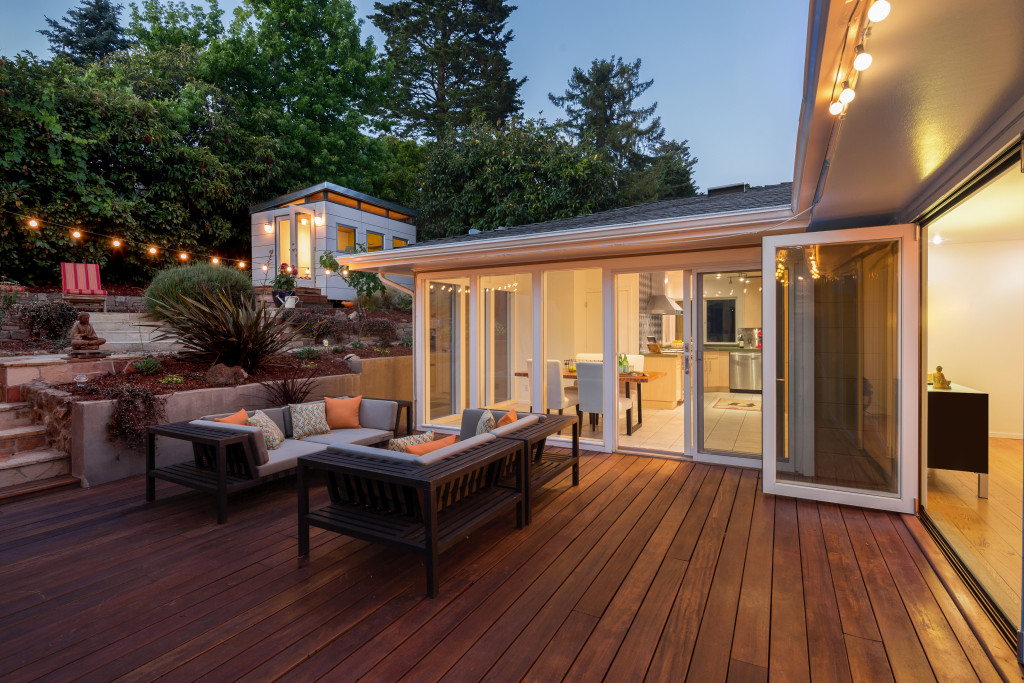According to the Global Home Improvement Market Forecast 2020-2026 by Brand Essence Market Research (BMRC), the home improvement market worldwide had a value of $849.31 billion in 2019 and grew to $887.53 billion in 2020. The forecast is for a compound annual growth rate (CAGR) of 4.5 percent to reach $1155.79 billion by 2026 and $1207.80 Billion by 2027.
The report defines home improvement as maintenance, repair, and general servicing tasks as well as projects upgrading the house interior, exterior, or any other improvements to the property including lawns, gardens, and outdoor structures. The average spending for home improvement is $15,000, with 52 percent doing only repairs, 58 percent also doing renovations, and 65 percent also decorating. This is happening in areas with rapid urbanization and increasing disposable incomes.
Redesigning for the Elderly
Home improvement also includes the addition of features needed by the elderly for aging-in-place. The Joint Center for Housing Studies of Harvard University states that Boomers, or those born from 1946 to 1964 and are now aged 57 to 75 years old, comprised 31 percent of those who spent on residential remodeling in 2005 and will make up 56 percent in 2025.
The needs of the elderly are usually not considered when houses are first built. Even in the U.S., a survey for the U.S. Census Bureau shows that only 10 percent of homes nationwide have a bedroom, bathroom, and toilet on the first floor, with handrails and a safety shower seat. Most also have steps in the entrance while millions of seniors have difficulties walking and climbing stairs. The Centers for Disease Control and Prevention (CDC) reports that 30 million seniors fall every year, with one falling every second somewhere in the country.
Do It Yourself (DIY)
An article on DIY International cited the presentation of Euromonitor International’s Stefano Botter on the Global DIY Network, where he stated that sales in the DIY market increased in some countries in 2020 despite the Covid-19 pandemic. He reported that sales increased by 8.1 percent in Australia, 4.1 percent in the Netherlands, 1.8 percent in South Korea, and one percent in the U.S. On the other hand, sales in the DIY market decreased by 28.6 percent in India, 10.2 percent in South Africa, and 6.9 percent in Brazil.
The global forecast is optimistic, though. According to the DIY Home Improvement Market 2020 Report by BMRC, the value of the DIY home improvement market was at $819.53 billion in 2018 and, with a forecast of 4.8 percent CAGR, it can get to $1137.57 billion by 2025. The report states that the current preference of customers for purchasing DIY home improvement products online and having these delivered conveniently to their doorsteps further fuels the DIY market.
It is tempting to do a project when everything needed is online, with so many styles to choose from. For instance, for a bathroom makeover, everything from tiles to bathroom vanity units, showerheads, shower screens, shower shelves, tapware, rails and hooks, and other accessories are ready for delivery.
Accommodating Family Needs in the Home

The pandemic made families realize that they need both common spaces to gather in and individual spaces for undisturbed work and studying. They are now redesigning homes for these purposes. Basements and attics are being rediscovered and put to better use.
More living space is being built either horizontally or vertically. Space is at a premium such that interior decorating is now more functional than merely aesthetic. Every inch of the floor area must be useful even if only to provide more breathing space.
Kitchens become even more important as families opt to cook meals together at home. Renovations allow more people in the kitchen at the same time, making it an opportunity for bonding.
Bathrooms double as places of refuge and relaxation, hence their popularity as a priority for renovation. Spa-like interiors are pegs, including showerheads that mimic rain showers. Combinations of showers with bathtubs as the base are also space-saving options.
People want to save energy, as well, replacing insulation when necessary. Windows are also replaced with new models that have special glass coatings filtering dangerous UV rays and keeping the indoor temperature controlled.
Families are also improving their outdoor areas, adding patios, porches, decks, or gazebos surrounded by lawns and gardens. Some people add barbecues or a fire pit. Some put in a Jacuzzi or a swimming pool. Expanding the living area outdoors prevents cabin fever from setting in.
Comfort Zone
The home is the family’s comfort zone. It is not surprising that when they can afford it the family will want to continue improving on their home to upgrade their standard of living.
This is a wise use of resources especially when the needs of every family member are considered. It means they can immediately enjoy the benefits of the improvements while at the same time increasing the value of the family home. It becomes a clever investment.
